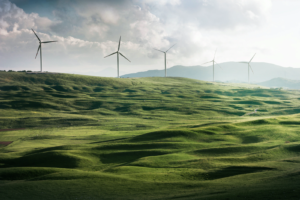Businesses need energy to function. But according to the Department of Energy in the United States, businesses are the largest energy vampire in the economy. Instead, federal research reveals that the US wastes over 66.7 quads of energy, compared to 31.1 quads that are being used. The business sector, including transportation, industry, and commerce, is responsible for over 56 quads of rejected energy. In other words, the majority of the energy that is not being used is wasted in businesses.
It is time for businesses to align their strategies with the energy industry sector trends and actively reduce waste. However, reducing waste does not come without a challenge. Indeed, to ensure that companies do not reject excess energy, it becomes essential to transform the existing processes.
Yet, transforming your operations and strategy can affect your customers:
- Slower processes
- Increase costs
- Reduce the range of services or products available
- Reduce stocks
- Switch third-party suppliers
So how can you announce the change and get your customers on-board even if they will suffer a loss?

Unsplash – CC0 License
Focus on customer service
Effective customer service can ensure you can still take care of your customers and reassure them. Indeed, understanding the consequences for your customers can help address their worries and fears:
- Through targeted FAQs
- Informative article about what your energy strategy is
- Live chat for real-time queries
- Setting up new benchmarks, so your customers understand the new “normal”
Explain why you’re doing this
There is no denying that every customer appreciates the need to put the environment first. So, when you actively tackle energy waste, you also improve the carbon footprint of your business. From a customer’s perspective, accurate and honest information can help “swallow” the pill. Essentially, most people dislike being worse off, such as experiencing delivery delays or out-of-stock notifications. But if you can display how your strategy is benefiting the environment, they are more likely to trust your brand during the challenging transition period:
- Graph visualization of waste reduction
- Regular reports or podcasts on your progress
- Celebrate milestones by doing something for your customers, such as a limited-time offer
- Thank them for their understanding and patience

Show the changes inside your business
What do you do in everyday operations to cut down your energy consumption? Customers want concrete answers. They want to understand which steps your business is taking and why it affects them. So, it can be helpful to establish a unique communication line fully dedicated to supporting your energy objectives for your customers.
You can share your business plans at an energy level, explaining how much energy the business was consuming before you implemented the strategy. This can also identify the main energy vampires within the company and how their removal affects customers. For example, you could have switched from a high-volume packing machine to a lower-volume setting to reduce energy needs without losing packaging quality. As a result, you can demonstrate that the new process is slower but more eco-friendly.
Customers welcome environmentally-focused decisions. However, in a business world where a hectic pace used to be the norm, eco-friendly approaches can be time and cost-demanding. Keeping your customers in the loop can ensure they understand your decisions and can support your brand even if they experience inconveniences during the energy transition phase.
